Ancient Alexandria denotes the ancient urban complex situated between the Mediterranean Sea and Lake Mareotis, encompassing the mainland grid, the island of Pharos, the Heptastadion, and the surrounding necropoleis. The term archaeological context refers to stratified or situational conditions—terrestrial or submerged—from which material remains such as ceramics, architectural fragments, inscriptions, and sculpture are recovered. Urban morphology signifies the structural organization of the ancient city, including street alignments, harbor basins, civic precincts, and residential quarters. Ritual topography designates the spatial distribution and architectural character of temples, shrines, cemeteries, and commemorative installations.
Material culture comprises portable and immovable artefacts that illuminate patterns of daily life, economic activity, and ideological expression. Syncretism refers to the fusion of Greek, Egyptian, and Roman artistic, linguistic, and religious elements observable in Alexandrian monuments, imagery, and architectural forms. Harbor archaeology denotes the combined study of maritime installations—quays, breakwaters, ship sheds, and lighthouse foundations—together with the submerged remains of civic structures along the Eastern and Western Harbours. These definitions outline the principal analytical terms relevant to the study of Alexandria’s ancient physical and cultural landscape.
Foundation and Hellenistic Period (332–30 BCE)
Alexandria was founded in 332 BCE by Alexander III of Macedon, who selected the site between Lake Mareotis and the Mediterranean for strategic and commercial reasons. After his death in 323 BCE, the city became the capital of the Ptolemaic Kingdom under Ptolemy I Soter and his successors. During the 3rd–2nd centuries BCE, Alexandria emerged as the preeminent intellectual and maritime center of the eastern Mediterranean, anchored by institutions such as the Mouseion and the Library, and by major infrastructural works including the Heptastadion and the Pharos lighthouse on the island of Pharos.
Roman Rule and Early Imperial Period (30 BCE–250 CE)
Following the defeat of Cleopatra VII and Mark Antony in 31 BCE, Egypt was annexed by Octavian (emperor Augustus) in 30 BCE, after which Alexandria became the administrative capital of the Roman province of Aegyptus, governed by a prefect of equestrian rank. The city retained its economic centrality, serving as the primary exporter of grain to the ancient city of Rome. During the 1st–3rd centuries CE, Alexandria experienced significant urban expansion, demographic growth, and periodic civil disturbances, including the Jewish–Greek riots of 38 CE and the revolt of 115–117 CE (the Kitos War).
Late Roman and Early Christian Period (250–450 CE)
Alexandria’s political importance persisted through the 3rd century CE, despite imperial crises and local unrest. The city became a major center of Christian intellectual activity, associated with figures such as Clement of Alexandria and Origen, and later with the episcopate of Athanasius during the Arian controversies of the 4th century CE. Administrative reforms under Diocletian in the late 3rd century CE and Constantine in the early 4th century reorganized provincial governance and reinforced Alexandria’s role as a metropolitan see. The destruction of the Serapeum in 391 CE under Theophilus marked a significant moment in the decline of Alexandrian pagan institutions.
Byzantine Period and the Arab Conquest (450–650 CE)
Under Byzantine rule, Alexandria remained a major commercial port and intellectual center, though periodically destabilized by theological conflicts, particularly between Chalcedonian and Miaphysite communities. The city’s prominence diminished relative to Constantinople and Antioch on the Orontes but retained regional significance. In 641 CE, following the campaign of the general ʿAmr ibn al-ʿĀṣ under the Rashidun Caliphate, Alexandria capitulated to Arab forces. A brief Byzantine recapture in 645 CE was reversed the following year, establishing permanent Muslim control.
Early Islamic to Ottoman Period (650–1850 CE)
After the conquest, administrative power shifted inland to Fustat, and Alexandria declined in political status but remained active in Mediterranean trade, particularly under the Fatimids (10th–12th centuries) and Ayyubids (12th–13th centuries). The Mamluk period (13th–16th centuries) saw both economic revival and episodes of military vulnerability, including attacks by Crusader forces. Under Ottoman rule beginning in 1517 CE, Alexandria functioned primarily as a provincial port with reduced urban scale. Significant modernization and renewed economic importance would not occur until the 19th century CE under Muhammad Ali, beyond the scope of the classical and medieval periods.

The archaeological site of Taposiris Magna, located on the Mediterranean, is a significant center of ancient Egyptian history founded by Pharaoh Ptolemy II circa 280. The name, meaning "Great House of Osiris", refers to a large temple complex that was a major center of worship for the god Osiris and the goddess Isis. The site, which includes a notable tower resembling the ancient Lighthouse of Alexandria and an extensive necropolis, has been the focus of ongoing excavations that have yielded remarkable discoveries, including coins bearing the likeness of Cleopatra VII. Read more
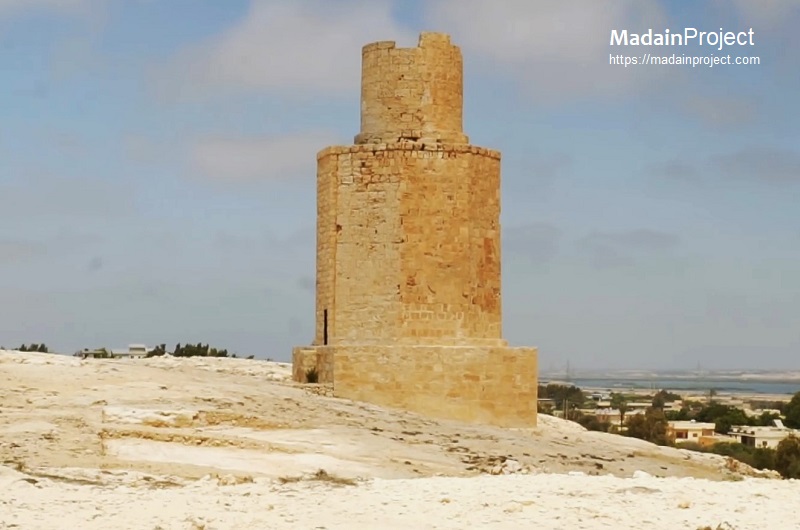
This approximately 20-meter-tall, three-story tower is widely considered by archaeologists and historians to be a scaled-down architectural model of the famed Pharos of Alexandria, which was erected during the same Ptolemaic period (reign of Ptolemy II Philadelphus, 285–246 BCE). Its design mimics the three-tiered structure of the Pharos, featuring a square base, an octagonal midsection, and a cylindrical upper section, making it an invaluable primary source for understanding the appearance of the lost Wonder of the Ancient World. Read more
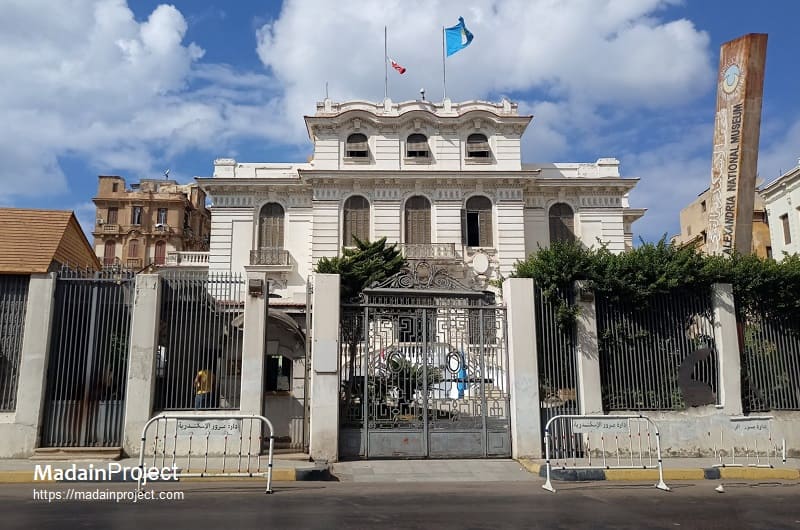
Housed within the meticulously restored Italianate-style palace of the former wealthy merchant Asaad Basili Pasha, which also briefly served as the U.S. consulate, the museum was officially inaugurated in 2003 by the Supreme Council of Antiquities. Its collection, comprising approximately 1,800 artifacts primarily sourced from other major Egyptian museums, is systematically organized across three floors to represent distinct historical epochs: the basement for Pharaonic antiquities, the first floor for the Greco-Roman period, and the second floor for Coptic, Islamic, and modern history collections. Read more
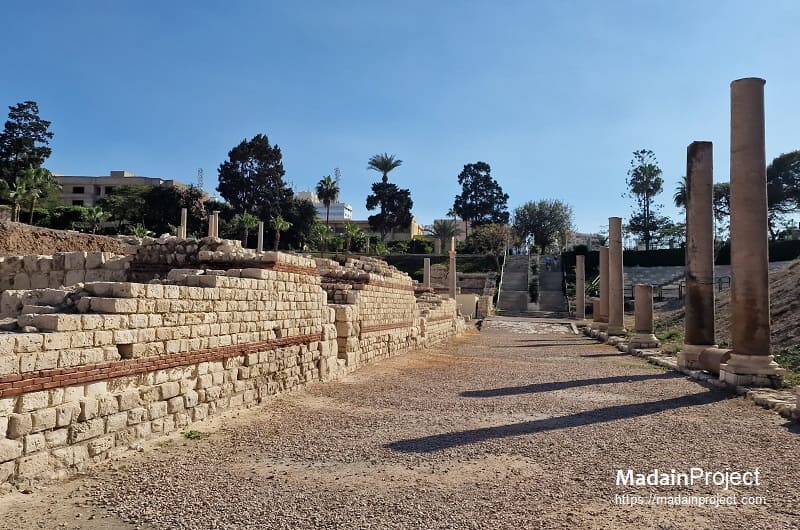
The archaeological site of Kom el-Deka (Arabic for "mound of rubble"), located in the heart of modern Alexandria, represents one of the most comprehensive and well-preserved urban quarters from the Roman and Byzantine periods in Egypt. Systematic excavations, initiated by a Polish-Egyptian mission in the 1960s, have unearthed a wealth of civic, residential, and educational architecture spanning from the 2nd to the 7th centuries CE. Read more
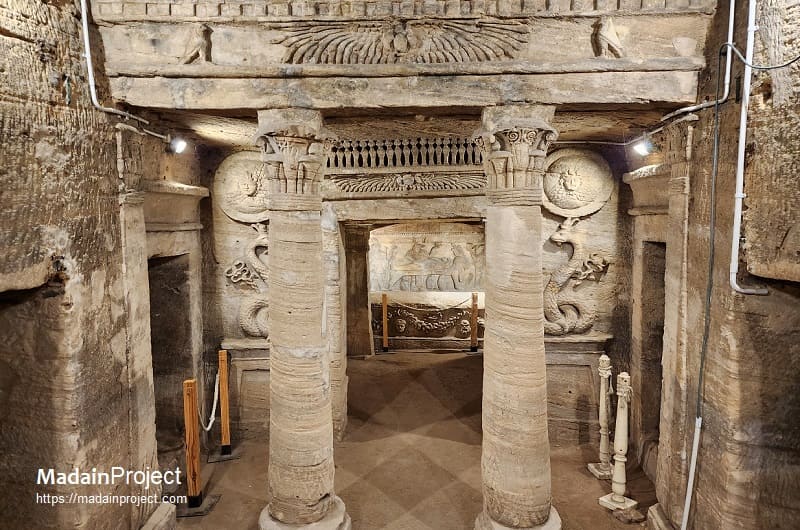
The Catacombs of Kom el-Shoqafa, located in the western necropolis of Alexandria, constitute the largest known Roman-era burial site in Egypt and a premier example of the cultural syncretism characteristic of the city from the 2nd to 4th centuries CE. The architectural and decorative elements throughout the labyrinthine network of chambers, which likely evolved from a private family tomb into a public cemetery, profoundly illustrate a fusion of Egyptian, Greek, and Roman artistic traditions. Notable features include a spiral staircase for lowering bodies, a central rotunda, a Roman-style triclinium (banquet hall) for funerary feasts. Read more
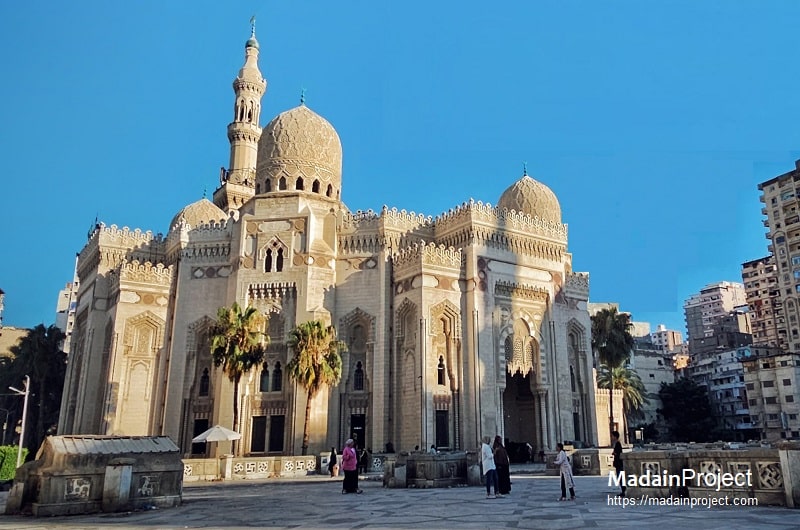
The Abu al-Abbas al-Mursi Mosque is a prominent Islamic architectural monument and spiritual center located in the Anfoushi district of Alexandria, Egypt, overlooking the Eastern Harbor. Named in honor of the revered 13th-century Andalusian Sufi saint, Abu al-Abbas al-Mursi (1219-1286 CE), who settled and taught in Alexandria, the mosque complex houses his tomb and those of several other mystics. Read more

The Citadel of Qaitbay, a quintessential example of Mamluk military architecture, is a 15th-century defensive fortress strategically located on the eastern tip of Pharos Island at the entrance to Alexandria's Eastern Harbour. Commissioned by Sultan Al-Ashraf Sayf al-Din Qaitbay and constructed between 1477 and 1479 CE, the citadel was explicitly designed to fortify the Egyptian coastline against the burgeoning naval threat from the Ottoman Empire. Read more

The Greco-Roman Museum of Alexandria is a preeminent center for the study and display of Egypt's Hellenistic and Roman periods, a span covering roughly a thousand years from the founding of the city in 331 BCE to the Arab conquest in 641 CE. Established in 1892 by the Italian scholar Giuseppe Botti and inaugurated by Khedive Abbas Helmy II, the museum moved to its current, purpose-built neoclassical building in 1895, a structure featuring a facade inscribed with the ancient Greek word "MOYΣEION" (Mouseion), or "place of the Muses". After extensive renovations that began in 2005, the museum officially reopened in October 2023, offering modern exhibition spaces across 27 halls. Read more
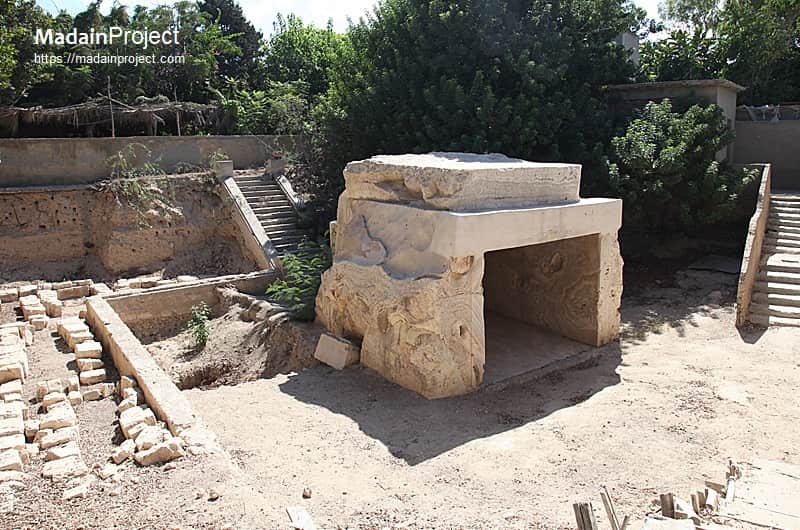
The so-called "Alabaster Tomb", a unique funerary monument located in the Latin Quarter of Alexandria, is an architectural anomaly from the very early Ptolemaic Period, potentially dating to the late 4th or early 3rd century BCE. It is distinguished by its construction entirely from calcite alabaster ("Egyptian alabaster"), a luxurious and expensive material not locally sourced, indicating the exceptionally high status and wealth of its unidentified owner. Read more

The Tomb of Alexander the Great is known to have existed originally in ancient Alexandria. However, the location remains elusive to modern archaeology, sparking centuries of speculation and numerous search efforts. Historical texts confirm that the Soma (Greek for "body"), as the complex was known, was a monumental shrine in the center of the ancient city where Alexander's deified remains were venerated by Roman emperors and other dignitaries for centuries. Read more
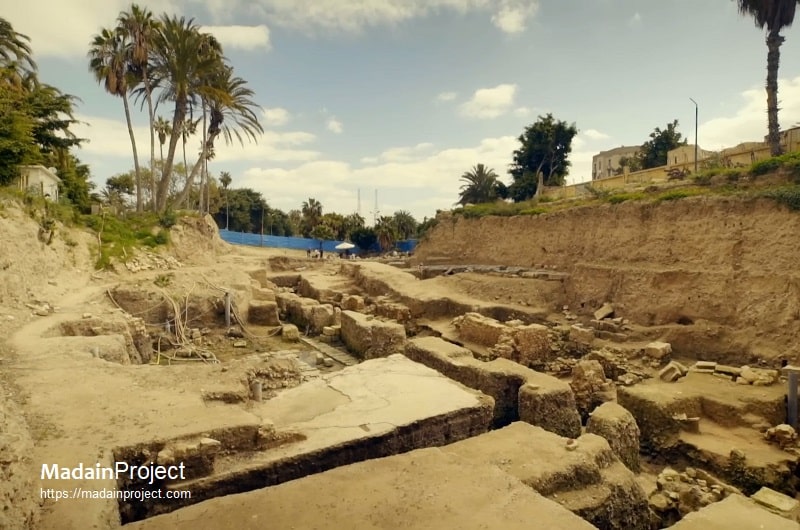
The Royal Quarters Archaeological Site, situated within the modern Shallalat Gardens in Alexandria, represents a crucial area for understanding the terrestrial topography of the ancient Hellenistic city. Historical sources, particularly Strabo, indicate that this precinct encompassed the Ptolemaic palaces and extensive gardens on Cape Lochias. Since 2007, the Hellenic Research Institute of the Alexandrian Civilization (HRIAC) has conducted extensive excavations, challenging previous assumptions that the area was devoid of significant antiquities. Read more

The Serapeum of Alexandria was a monumental temple complex dedicated to the syncretic Greco-Egyptian deity Serapis, the official patron god of Alexandria during the Ptolemaic dynasty. Initiated by Ptolemy I Soter and significantly expanded under Ptolemy III Euergetes in the 3rd century BCE, the complex was situated on a raised rocky plateau in the western part of the city and was widely considered one of the most magnificent ancient sanctuaries, second only to the Roman Capitol. Read more
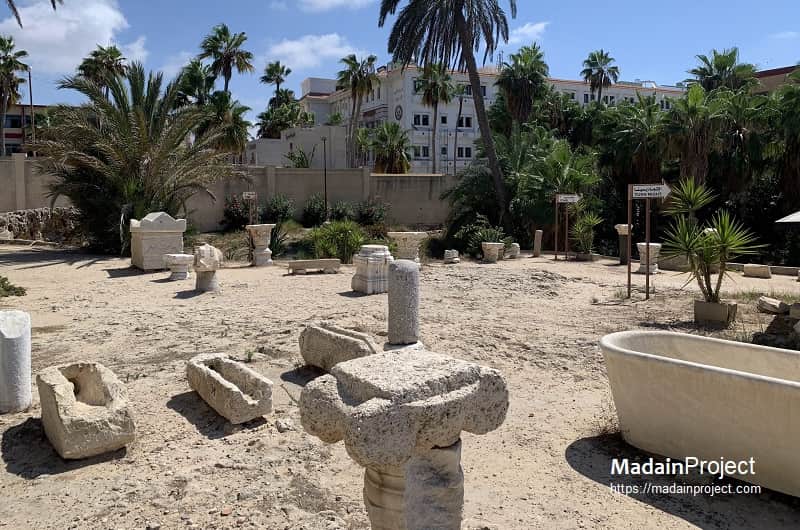
The Anfushi Necropolis, located on Pharos Island in Alexandria's Ras el-Tin district, is a significant archaeological site comprising a complex of five rock-cut, underground tombs that date from the mid-2nd to the mid-1st centuries BCE. The subterranean structures are typically arranged around an open-air courtyard, accessed by a descending staircase, and feature chambers with loculi (burial niches) and sarcophagi carved into the limestone bedrock. Read more
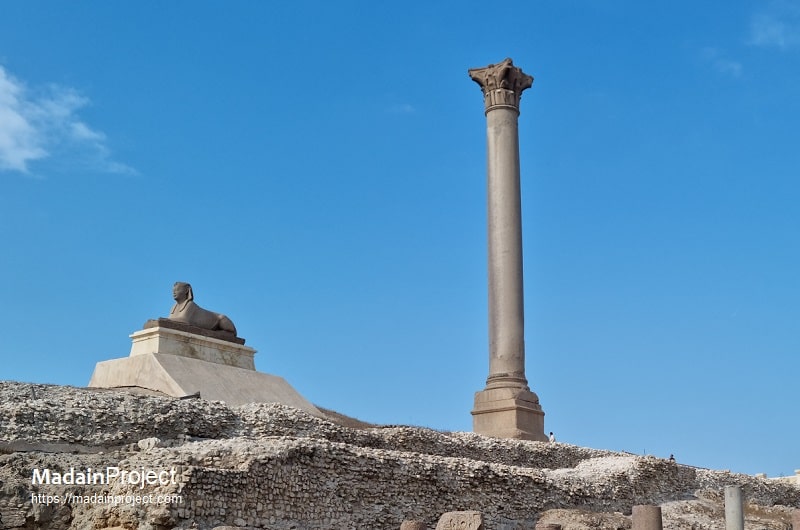
The monument widely known as Pompey's Pillar is a Roman triumphal column located in the Serapeum archaeological complex in Alexandria, Egypt. Erected between 298 and 302 CE, the column was dedicated to the Emperor Diocletian by the Roman prefect of Egypt, Postumus, in gratitude for the emperor's actions in quelling a revolt and distributing grain to the famine-stricken populace of Alexandria. The attribution to the Roman general Pompey the Great is a misnomer originating from a medieval European traveler's misconception that his remains were interred at the site. Read more

The Temple of Osiris at Taposiris Magna, a principal cultic center established during the Ptolemaic era (specifically under Ptolemy II Philadelphus, circa 280–270 BCE), stands as a significant architectural example of the period's cultural syncretism, blending traditional Egyptian religious architecture with Hellenistic design elements. Known locally as Qasr Abusir, the temple complex features massive, imposing enclosure walls, some reaching up to 10 meters in height, which remain the most visible part of the structure today. Read more
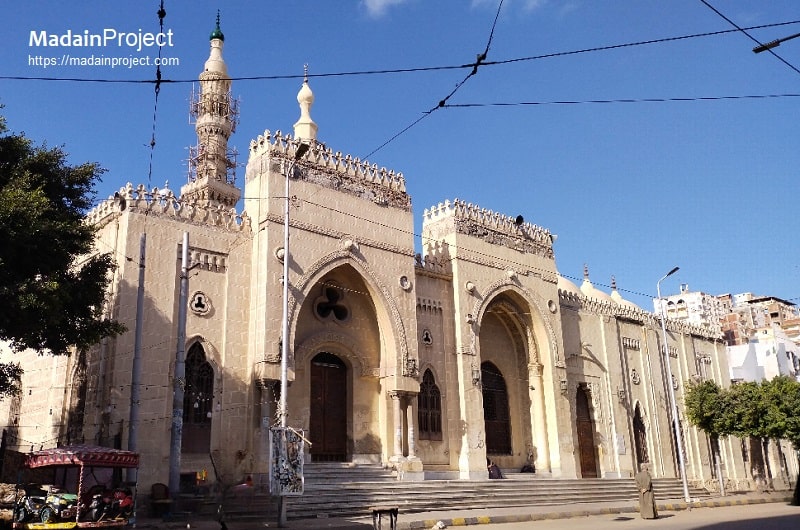
The Imam al-Busiri Mosque, located in the Anfoushi district of Alexandria, is a significant historical and architectural site that serves as the final resting place for the renowned 13th-century Sufi poet Imam Sharaf al-Din Muhammad al-Busiri. The current structure was primarily built in 1858 under the commission of Sa'id Pasha, the Wali of Egypt, to replace a more modest, older building. Architecturally, the mosque is influenced by Ottoman and Neo-Mamluk styles, featuring three main domes and a minaret. Read more
Signup for our monthly newsletter / online magazine.
No spam, we promise.